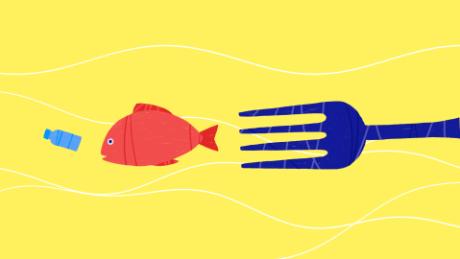https://edition.cnn.com/2019/06/24/health/plastic-pollution-rivers-oceans-scn-intl/index.html?utm_source=fbCNNi&utm_medium=social&utm_term=link&utm_content=2019-06-29T21%3A03%3A27&fbclid=IwAR2m8ru9sza7-VSLn7it4B_Yox50z38C3oO0JK8N6W_83WLVfW3NOyPR4jc
How rivers became the plastic highway into the oceans
By Mark Tutton and Ed Scott-Clarke, CNN
Updated 0307 GMT (1107 HKT) June 25, 2019
London (CNN)Millions of tons of plastic enter the oceans every year, polluting our seas, littering our beaches and endangering wildlife.
Plastic can take centuries to break down, and instead of quietly disappearing beneath the waves, it has a way of coming back to haunt us.
Almost 1 million shoes and over 370,000 toothbrushes were among more than 400 million pieces of plastic recently found washed up on a remote group of islands in the Indian Ocean.
Great chunks of plastic have been found inside the stomachs of everything from seabirds to whales, while tiny microplastics are eaten by fish and other sea creatures, ending up as part of the food chain.
That same plastic can even end up in humans. A recent study found that globally, we are swallowing an average of 5 grams of plastic every week -- although that doesn't all come from the oceans.
The health risk from these microplastics is still relatively unknown, but it begs the question, how does all that plastic even end up in the sea, and how can we stop it from getting there in the first place?
Rivers of plastic
A 2017 study found that around 90% of all the plastic in the world's oceans flows there through just 10 rivers. Eight of those rivers were in Asia, and two in Africa. They all run through highly populated areas, which also lack effective waste collection, meaning trash often ends up in the river.
The researchers concluded: "The more waste there is in a catchment area that is not disposed of properly, the more plastic ultimately ends up in the river and takes this route to the sea."
But plastic is getting into rivers all over the world.
Thames21 is a group that organizes clean-ups along the foreshore of the River Thames, in the UK, and educates people to not pollute it.
"We're finding that we are having a real reduction in the amount of plastic bags that we found and the bottles that we found," says Luke Damerum, who works with the group.
Its prime target now is wet wipes, which are often flushed down toilets and are discharged into the river from the sewers after heavy rainfall. They can end up lining the foreshore in a thick carpet.
"If this stuff remains on the foreshore, a lot of it will just break down into smaller and smaller pieces into ... microplastics," explains Damerum. "These microplastics will ... eventually go down towards the estuary and then out into the open ocean."
The group removed 23,000 wet wipes from one stretch of the Thames foreshore in just two hours in March -- enough to fill 473 bin bags.

Volunteers with Thames21 cleaning up the river.
Clothes, car tires and cosmetics
Plastics are so ubiquitous in our lives that there are countless other sources of plastic pollution.
In the eastern United States, the Hudson River carries 300 million clothing fibers into the Atlantic Ocean every day, according to a 2017 study. About half of the fibers are plastic, many entering the water network when clothes are machine washed.
Clothes can also shed fibers into the air, as can car tires and waste plastic left in landfills -- which can all end up in our rivers and seas.
Fertilizers made from sewage sludge -- the by-product of sewage water treatment -- are another source. The sludge can contain microfibers from clothes and other plastics washed into the sewers. As these fertilizers dry out, some of the plastics can get carried off the land by the wind, or wash directly into rivers.
Then there are the microbeads that are added to toothpaste, body scrubs, cosmetics and soaps. A 2015 study estimated that 8 trillion microbeads entered U.S. aquatic habitats daily. Since then, microbeads have been banned from some products in countries including the USthe UK.
The shipping and fishing industries also play a part. In 2018 researchers found that, in terms of weight, almost half of the plastic in the Great Pacific Garbage Patch -- a notorious area of floating trash three times the size of France -- was made up of fishing nets. On the other hand, microplastics made up 94% of the estimated 1.8 trillion tiny pieces floating in the area.
To solve a problem, you must first understand it
So what can be done to solve the problem?
Professor Richard Lampitt, of the National Oceanography Centre, in the UK, says technological advances can help, like better filters in washing machines to catch microfibers -- as can industry moves to develop less damaging plastics.
But while he believes that research into solutions is important, he says it's vital that we develop a better understanding of exactly how plastic is transported into the oceans, how it degrades and what damage it is doing.
"There's considerable uncertainty about how much plastic pollution is coming from all these different sources," he told CNN.
"We need to have our eyes on what the nature of this problem is. How much plastic is there? How does it get there? How does it get transformed during its passage to the sea, and what harm does it do at the concentrations that it's found?
"These are really important questions to resolve."
















沒有留言:
張貼留言